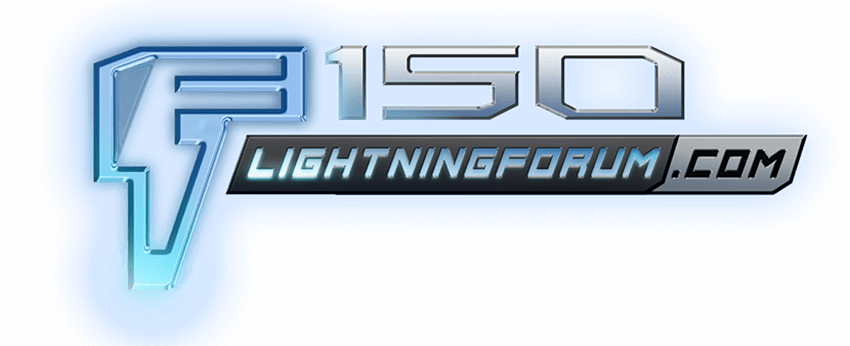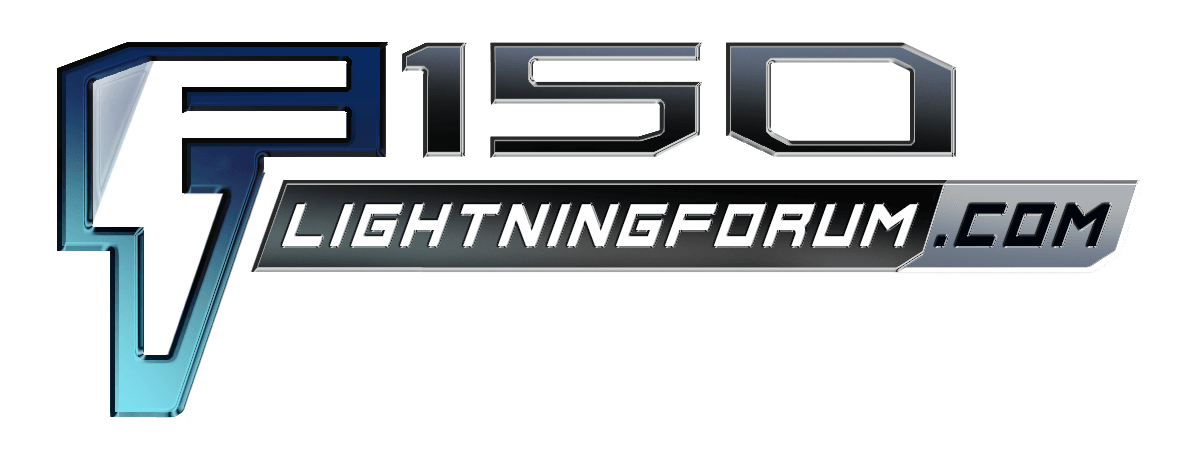MattVT
Member
- Thread starter
- #1
This past weekend we took our brand new Lightning Lariat on its inaugural road trip - a weekend tent camping on Deer Isle, Maine. All in, between the drive there and back and a few short drives around the islands, it was just short of 800 miles (the truck had less than that on the odometer when we set out).
We charged to 100% and then relied on public chargers after that, using the trip as a bit of a learning opportunity to try out different charges. We stopped more than we had to, taking the opportunity to get more familiar with DC fast charging - and stretch our legs on the long drive! On the way there we stopped at 3 different Tesla Superchargers, plugged in at a ChargePoint at a grocery store, and finally a local solar company offering 100kW charging for a final charge before heading onto the island.
We struggled at the first Tesla Supercharger, a v3, since we couldn't get the cable to reach while parked in forwards - spanning two spots. Fortunately it was early and there was only one other car charging, so we parked sideways to charge. On the way home we also stopped at a v3 charger and this time were able to get close enough to just make the cable reach - we learned not to straddle the line but to park completely in the space to the right, and pull all the way forward (we had to pick a spot without a bollard between the chargers) as far as we could.
The Tesla v4 Superchargers were much easier to use with the longer charging cables. We did have an issue with one charger where it lost connection a few times and we had to unplug / replug it in to restart the charging. I'm guessing it was just a faulty charger rather than anything we did wrong. The v4 Superchargers with the MagicDock worked great, although functionally no different from the Ford NACS adapter that came with the truck.
On the way there we noticed on the campground website that they had an EV charger on-site - something we hadn't seen earlier or were relying on. We called ahead to our friends who were already there to find out more. They spoke with the owner who said the charger was not yet installed, but we could use the 20A power at our site if we wanted to.
We arrived at the campground at 5:30pm at ~65% charge, confident that would be plenty for a few days of local trips, regardless of on-site charging. The combination of frunk, cab and truck bed made packing our tent, chairs, cooler and camping gear really easy. We set up and plugged the truck in to charge.
The next morning we awoke to find we, and several other sites around us, had no power. The FordPass app showed we had lost power just before midnight. Our friends have a young baby so we swapped our truck with theirs so we could plug their RV in and power it off the truck bed connection and get them back up and running. Off-grid camping was absolutely one of our use cases for buying this truck and getting the ProPower package, so it was great to see this worked exactly as planned - including with the adapter we had bought prior to the trip.
A few hours later the owner arrived to fix the issue. Turns out that a breaker had tripped - likely because it was the first cool night in a while and with several last minute bookings, all the sites were full. Several of the yurt-like structures had electric heaters, plus a couple of RVs and us, and the 30A shared between those sites wasn't enough. So yes, I guess we were (at least partially) to blame for the outage - oops! I told the owner that we didn't need to plug in if it was a problem, but he was insistent that he would find a way - eventually getting us plugged in with a heavy duty extension cord to the site next to ours which was on a different breaker.
Overall on the trip we consistently averaged ~2.4mi/kWh (~26kWh/100km) which I was pretty happy with - I just stuck to the speed limits and we took our time. Most of the DC fast charging cost around $0.40/kWh including the Tesla membership which our math showed us would quickly pay for itself. The truck is a stock 2025 Lightning Lariat with the factory-installed All Terrain tires inflated to 42psi (a little above the 36psi recommended), and a Bakflip tonneau cover that I installed. There were two of us in the truck plus I'd guess ~300lbs of cargo.
While we're no strangers to long road trips and camping, this being our first such trip in the truck gave us a little anxiety, but we needn't have feared - everything worked incredibly smoothly. Coming from my previous 2016 F-150 Platinum 3.5L EcoBoost, this truck was even more comfortable and easier to drive - BlueCruise handling miles of interstate with minimal user intervention required. Being able to power a cooler in the truck both while driving and while parked was awesome - we picked up fresh lobster and oysters from the harbor and yet could still go for a hike on our way home knowing things would stay cold.
All in, we came away from this trip even happier with our choice of truck. We had debated an ICE F-150, a Ranger, and various other vehicles before eventually landing on this one when we bought it a month ago, and for this trip, the Lightning was pretty much the perfect choice.
We charged to 100% and then relied on public chargers after that, using the trip as a bit of a learning opportunity to try out different charges. We stopped more than we had to, taking the opportunity to get more familiar with DC fast charging - and stretch our legs on the long drive! On the way there we stopped at 3 different Tesla Superchargers, plugged in at a ChargePoint at a grocery store, and finally a local solar company offering 100kW charging for a final charge before heading onto the island.
We struggled at the first Tesla Supercharger, a v3, since we couldn't get the cable to reach while parked in forwards - spanning two spots. Fortunately it was early and there was only one other car charging, so we parked sideways to charge. On the way home we also stopped at a v3 charger and this time were able to get close enough to just make the cable reach - we learned not to straddle the line but to park completely in the space to the right, and pull all the way forward (we had to pick a spot without a bollard between the chargers) as far as we could.
The Tesla v4 Superchargers were much easier to use with the longer charging cables. We did have an issue with one charger where it lost connection a few times and we had to unplug / replug it in to restart the charging. I'm guessing it was just a faulty charger rather than anything we did wrong. The v4 Superchargers with the MagicDock worked great, although functionally no different from the Ford NACS adapter that came with the truck.
On the way there we noticed on the campground website that they had an EV charger on-site - something we hadn't seen earlier or were relying on. We called ahead to our friends who were already there to find out more. They spoke with the owner who said the charger was not yet installed, but we could use the 20A power at our site if we wanted to.
We arrived at the campground at 5:30pm at ~65% charge, confident that would be plenty for a few days of local trips, regardless of on-site charging. The combination of frunk, cab and truck bed made packing our tent, chairs, cooler and camping gear really easy. We set up and plugged the truck in to charge.
The next morning we awoke to find we, and several other sites around us, had no power. The FordPass app showed we had lost power just before midnight. Our friends have a young baby so we swapped our truck with theirs so we could plug their RV in and power it off the truck bed connection and get them back up and running. Off-grid camping was absolutely one of our use cases for buying this truck and getting the ProPower package, so it was great to see this worked exactly as planned - including with the adapter we had bought prior to the trip.
A few hours later the owner arrived to fix the issue. Turns out that a breaker had tripped - likely because it was the first cool night in a while and with several last minute bookings, all the sites were full. Several of the yurt-like structures had electric heaters, plus a couple of RVs and us, and the 30A shared between those sites wasn't enough. So yes, I guess we were (at least partially) to blame for the outage - oops! I told the owner that we didn't need to plug in if it was a problem, but he was insistent that he would find a way - eventually getting us plugged in with a heavy duty extension cord to the site next to ours which was on a different breaker.
Overall on the trip we consistently averaged ~2.4mi/kWh (~26kWh/100km) which I was pretty happy with - I just stuck to the speed limits and we took our time. Most of the DC fast charging cost around $0.40/kWh including the Tesla membership which our math showed us would quickly pay for itself. The truck is a stock 2025 Lightning Lariat with the factory-installed All Terrain tires inflated to 42psi (a little above the 36psi recommended), and a Bakflip tonneau cover that I installed. There were two of us in the truck plus I'd guess ~300lbs of cargo.
While we're no strangers to long road trips and camping, this being our first such trip in the truck gave us a little anxiety, but we needn't have feared - everything worked incredibly smoothly. Coming from my previous 2016 F-150 Platinum 3.5L EcoBoost, this truck was even more comfortable and easier to drive - BlueCruise handling miles of interstate with minimal user intervention required. Being able to power a cooler in the truck both while driving and while parked was awesome - we picked up fresh lobster and oysters from the harbor and yet could still go for a hike on our way home knowing things would stay cold.
All in, we came away from this trip even happier with our choice of truck. We had debated an ICE F-150, a Ranger, and various other vehicles before eventually landing on this one when we bought it a month ago, and for this trip, the Lightning was pretty much the perfect choice.
Sponsored

